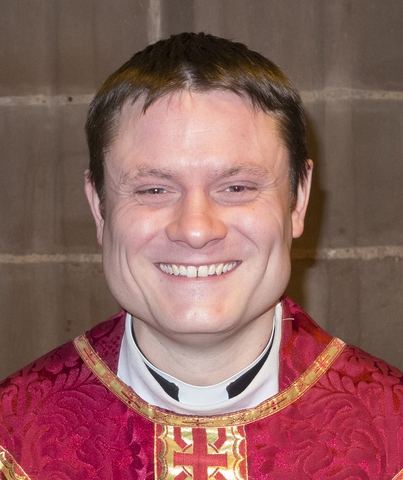
June News From the Clergy
14 May 2021 • From the Clergy
The clergy chanted in the choir, children screamed in the nave; the cries of screaming babies and the grieving of their mothers gave the response to those singing the office.
This evocative image, of the monks carrying on with the daily office in the choir while the nave was a scene of chaos, the transcendent song from one mingling with the piteous lament from the other, is a description by a local chronicler of Worcester Cathedral in early November 1139. Civil War between King Stephen and his cousin Empress Matilda had just begun in earnest, and men from Gloucester, loyal to the empress’ half-brother Robert but also seeking to attack their commercial rivals, were marching on Worcester. Forewarned, desperate citizens sought sanctuary in the cathedral with their most prized possessions, turning the church into what a modern historian describes as a ‘giant warehouse and refugee camp’. It saved many lives, for although the rabble from Gloucester set Worcester ablaze, none would dare harm a cathedral. Eighteen months later, as Winchester became a bewildering battleground in which the bishop was besieged in his castle by the empress, who was in turn besieged in the royal castle by Stephen’s queen, that city too was condemned to flames in the fighting and the cathedral likewise became a place of refuge. Whether the monks of Worcester and Winchester welcomed people with open arms is not recorded, but the fact is that their cathedrals became the immediate focal points for the populace in a time of great need.
Reflect on that picture for a moment, of the vast space of a cathedral functioning simultaneously as place of worship, hospital and refuge. Even in less troubled times, churches were places of meeting and business, the one communal space which drew people together. This was the medieval church, the centre of the community and the focal point of any given community’s life. Where possible, alms and food would be distributed to the needy. Worship transcended language, for few parishioners could understand the Latin of the mass (and many priests simply memorised words in a tongue they did not know), but the colour and visual actions all helped make it a performance to draw the community together. With no seating, parishioners would stand and mingle freely. One of the great disservices of later centuries, especially the Victorian age, was to remove this colour, to turn church into something where people sat in regimented, hierarchically-arranged pews in silence, being talked at rather than participating. Worse still was the notion of the church as a sacred space, set apart from the community, which could only be used for these interminable, colourless services, with infants required to be quiet and any community use frowned upon. It was a far cry from the medieval church as community centre, which in itself reflected the bustle of the Temple that we find in the Gospels. The people of the Middle Ages built churches in the heart of communities, or communities around churches, because the two were inextricably linked.
In the 800 or more years that St John’s Church has existed, we can only imagine what has gone on in the building, how it has been a place of worship, of sanctuary, of support for the needy, of community action, even of commerce and politics. Doubtless some of the unrecorded deeds would horrify us today. Yet as we celebrate 650 years as a parish church, it gladdens my heart that we are recovering that medieval ethos of the church as a core part of the community. From Little Lambs, with young children destroying the vicar’s carefully-constructed railway set, to the parish breakfasts which offer food and fellowship to everyone who wants them, this is what the church should be doing, for this is living God’s message. As we emerge from a devastating pandemic, more than ever we need to be reaching out into a lonely, frightened world, reminding ourselves and others that this place which has stood at the centre of our community for so many centuries has a crucial part to play still. There is much to learn from our history as we celebrate this anniversary, not least the value of what a parish church is for: to bring the love of God into its community in whatever ways are possible.